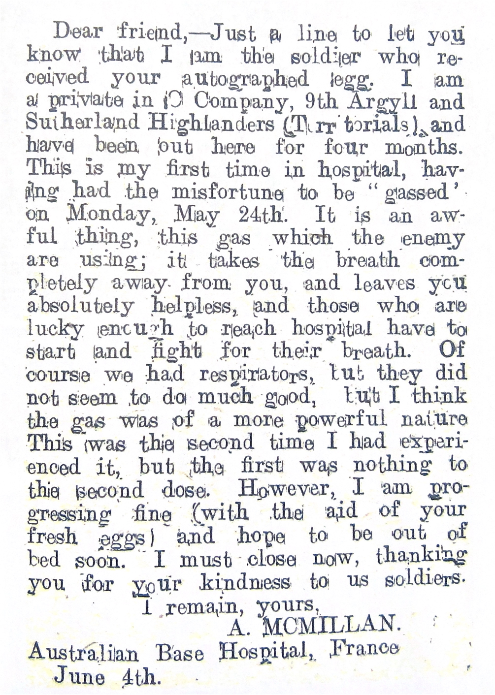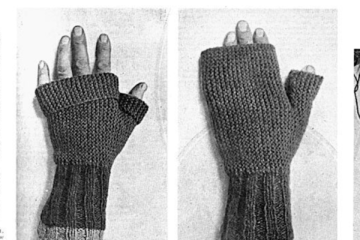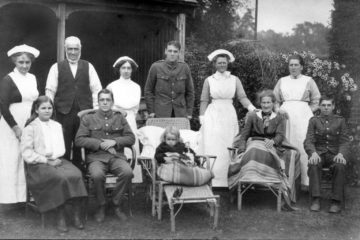The National Egg Collection for Wounded Soldiers began in November 1914, after proposals by the editor of the magazine Poultry World, Frederick Carl. At first, the scheme had a target of sending 20,000 freshly-laid eggs per week to a hospital in Boulogne, and wanted to later achieve 200,000 eggs per week, which they did in the Easter of 1915.
Queen Alexandra, wife of George V, soon became their patron. In celebration, the collection increased its target to 1,000,000 eggs being sent each week in August 1915. Between the 16th and the 23rd of August, 1,030,380 eggs were collected, with more being sent directly to hospitals, which Poultry World discouraged. Eggs were collected at over 2000 depots across the country run by churches and community groups, who also supplied special packaging and labels for sending the eggs off. Harrods later established a, free to begin with, central collection point in a London warehouse.
The scheme was aimed at all ages and social classes, but particularly wanted children involved. A hen wearing a red sash was used in posters advertising the National Egg Collection, with the caption “enlisted for the duration of the war,” with Poultry World further suggesting that all hens should be a part of active service. Adverts were put in newspapers, using patriotism and emotional language to appeal to the public to do their duty and collect eggs; they were eating eggs, while soldiers went without. Lapel pins and badges made from silk and cardboard began to be sold on flag days.
Those donating eggs were encouraged to put their name and address on the eggs sent, along with a message to the soldier receiving them, amusingly called ‘eggograms’ by Poultry World magazine. Often, senders received messages of thanks from the recipient soldiers, saying how happy they were to receive the eggs. It was estimated that an egg would make it into the hands of a wounded soldier or sailor within three days of being laid, even in France.
As the war continued, people were encouraged to keep up their egg collecting – hospital ships were being sunk by Germans, and the eggs were needed to maintain the wounded’s strength. They encouraged for 250,000 to be sent every week across the Channel by the Egg Collection to help the servicemen.
In October 1917, the Prime Minister of Great Britain, Lloyd George, wrote an appreciative letter to the Egg Collection. The Times newspaper published a letter from Field Marshall Sir Douglass Haig, famous for the Battle of the Somme, on the 21st October 1918, expressing the thanks of the Base hospitals in France for the eggs sent from the home front.
Eventually, the National Egg Collection ended in March 1919 after the war had ended. Avid egg collectors were issued certificates of honour for their efforts. In total, 41 million eggs were collected, with 32 million sent to Base hospitals in both France and Belgium. The National Egg Collection also sent a cheque for £5,865 (worth £295,015.75 in 2018) to the War Office.

Local Egg Collecting in Egham and Englefield Green
Egg collecting in the local area was run by multiple women, each acting as an egg collecting depot for their local area. In Egham and Englefield Green, Miss A.M Petrie and Mrs Maud Chetwyn-Stapylton organised the egg collections, and often wrote into the Surrey Herald newspaper in plea for more eggs, and thanks for those who had collected so many already. There were also collections in Bishops Gate, run by Mrs Forrest who also organised the Englefield Green Workrooms with Maud, and Virginia Water, run by Miss MacMaster.
In April 1915, the first local plea was sent for eggs, aiming to help towards the target of 200,000 eggs per week set by the National Egg Collection established by the War Office. Maud wrote to the paper again that June to thank the locals of Englefield Green for collecting 2268 eggs and £8 in money, particularly the contribution of 483 eggs by Miss Marsham and her pupils. By this time, people were being encouraged to write notes on their eggs for the recipient soldiers. Nora Freeman, a pupil at Englefield Green Schools, received a letter back from Private A McMillan of the 9th Argyll and Sutherland Highlanders at the Australian Base Hospital in France. He had been sent to hospital by a potent gas a fortnight prior, but was regaining his strength thanks to the eggs sent.

In October 1915, the number of eggs being collected fell. There was a apparent lack of eggs nationwide, so giving them away for the war effort was considered more of a luxury. The local egg collectors felt that all eggs should be sent directly to the Princess Christian’s Military Hospital in Englefield Green, where Maud was also a Voluntary Aid Detachment Nurse (VAD). Old Windsor also housed an annex of the military hospital, and both were commended for how few lost cases they had. The National Society offered a grant to the hospital of 500 eggs a week in September 1915, which was increased to 750 eggs in April the next year.
In October 1915, an afternoon variety event at the Constitutional Hall was held in aid of the Egham branch of the National Egg Collection, arranged by Miss Petrie and Miss Kinlock, the collector for Windsor. The event was described by the Surrey Herald as “of interest and attractive description, and included songs and musical items.”
In the first year of the Egham egg collection, 11,816 eggs were collected, along with £10 12s 6d (equivalent to £626.79 in 2017). Miss Marcham and her Englefield Green School Girls collected 5,718, with Olive Tolmon being the biggest contributor among these girls. Miss Kinlock in Windsor collected 39,769 eggs from her various local depots in the same time frame.



0 Comments